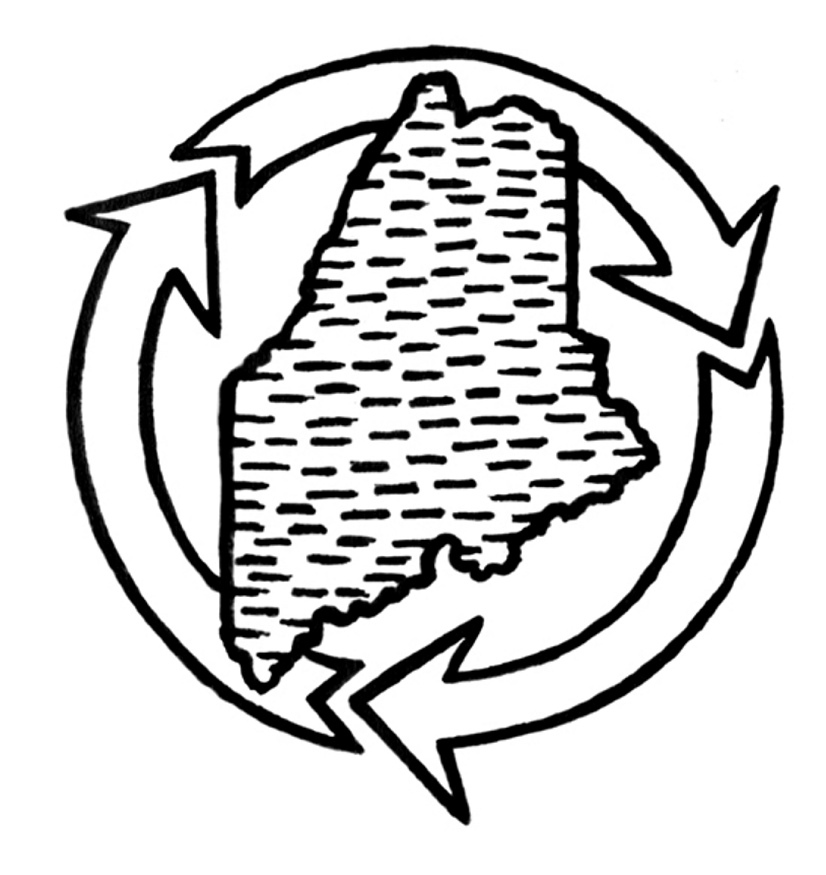In the muddy-puddle depths of April, winter’s white has turned road-sand brown while summer’s uplifting palette is still a mirage. If I were ever to fall out of love with Maine, it would be in this protracted pothole between winter and the belated arrival of an insufficient spring.
Farther south, spring qualifies as a true season – a slow-motion sequence of blooming and greening that unfolds over months. Maine has no such spring. Here “spring” is a mere em dash between the lingering mud of late winter and the basking days of high summer.
Spring is a particular misnomer this year. Its official arrival on the March equinox fell between single-digit nights and yet another snowfall (in case the 2-foot snowpack still on the ground was not sufficient).
This record-breaking winter will likely spawn a mud season that lasts unseasonably long, reducing this year’s “spring” to a mere hyphen. Go away for a weekend in May, and you’ll likely miss it.
Yet ironically, this trying time of year affirms my commitment to place. It’s easy to be captivated by Maine on clear, nor’westerly June mornings and on October afternoons when saffron light ignites fall foliage. That’s why so many starry-eyed visitors gush about how they adore Maine.
But that’s not love; that’s infatuation. It’s a picture-postcard fantasy about “Vacationland.” Love counts most in the times that aren’t sunny. The annual gritty slog through the dregs of winter separates the casual visitors from those who have sunk roots deep into place. (And there’s nothing like mud season for sinking deeper still into place!)
Going through this endurance contest, when states to the south are enjoying spring, shifts the character of our relationship to place. Over time, Wendell Berry writes, the attachment to one’s home ground “becomes problematical, practical and responsible.… Because it must. It is like marrying your sweetheart.”
I married Maine long before I ventured into conventional marriage to another person. In fact, the second marriage was predicated on that long-standing prior commitment: love me, love my state.
Yes, the economy here is chronically challenged and work prospects are lean. Indeed, the winters are dark and long. Sure, there’s an interminable parade of deer ticks, black flies, mosquitoes and no-see-ums once warm weather finally arrives. This was never blind love, trust me.
But early in life, I forged a bond with this land that has only deepened over time.
“Each of us harbors a homeland,” Terry Tempest Williams writes, “a landscape we naturally comprehend. By understanding the dependability of place, we anchor ourselves as trees.”
I hold to this coast as tenaciously as the spruce that grow out of bedrock, with soil barely sufficient to cover their roots.
Fewer and fewer people today are anchored as trees, especially in this peripatetic nation. Place can seem like an irrelevant backdrop in an increasingly virtual world.
Americans move frequently from choice and necessity (11 times, on average, through life) for new jobs, better schooling options, cheaper housing or greater “conveniences.”
Beyond all the practical considerations that drive these moves, there’s a restlessness that seems to afflict Americans – a form of spring fever that lingers year-round.
This amorphous hunger fueled the country’s frontier expansion, and lives on inside us, as Wendell Berry acknowledges in his poem “The Thought of Something Else”:
The mind turns, seeks a new
nativity – another place,
simpler, less weighted
by what has already been.
Another place!
It’s enough to grieve me –
That old dream of going,
of becoming a better man
just by getting up and going
to a better place.”
Adventure and opportunity, in this culture committed to mobility, are associated with “going places” and “new horizons.” Those who resist the allure of new places are judged as backward and unworldly.
But it seems to me that the perennial quest for a perfect place is the more naïve worldview.
“To be rooted,” Simone Weil observed, “is perhaps the most important and least recognized need of the human soul.”
Part of what makes Maine such an inspirational setting is not just its natural beauty and the ever-evolving weather and seasons (even if the turn from winter does move at a glacial pace). It is the number of people who have committed to make this their lifelong home.
Putting down roots and nurturing a good life here – rather than seeking greener fields elsewhere, strengthens the fabric of our communities. Places feel very different when most of their members are vested, not just passing through.
Persevering through long winters and relentless mud, we learn the value of knowing a place by heart through all its moods and seasons. That bond can weather a lot of potholes, and sustain us for the duration.
Dorothy in “The Wizard of Oz” had it right: “If I ever go looking for my heart’s desire again, I won’t look any farther than my own backyard. Because if it isn’t there, I never really lost it to begin with.”
ABOUT THE WRITER
MARINA SCHAUFFLER, Ph.D., is a writer who runs Natural Choices (naturalchoices.com).
Send questions/comments to the editors.



Comments are no longer available on this story